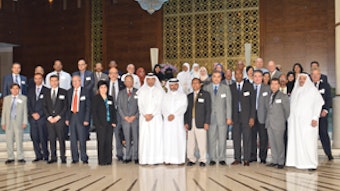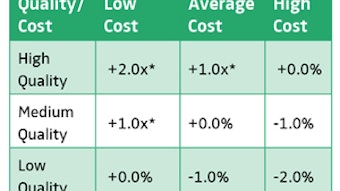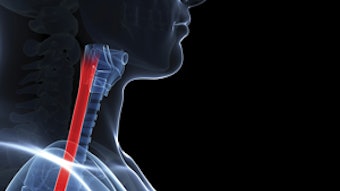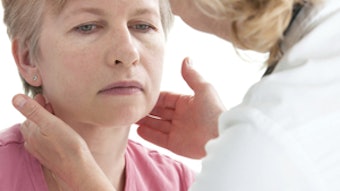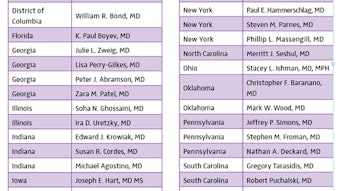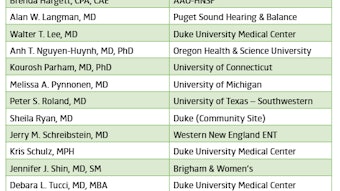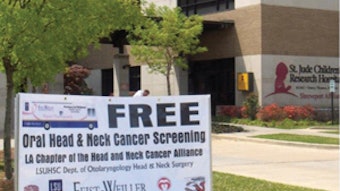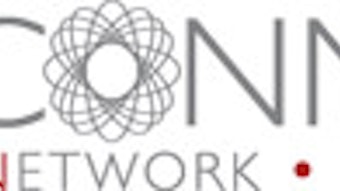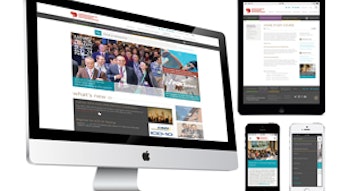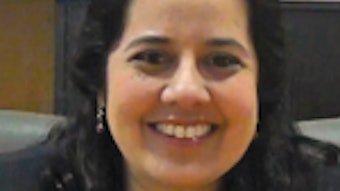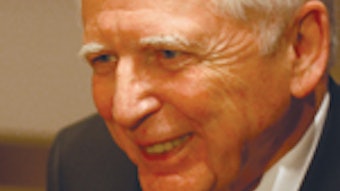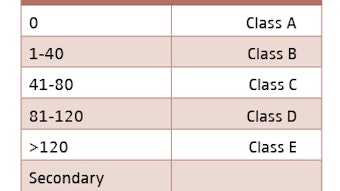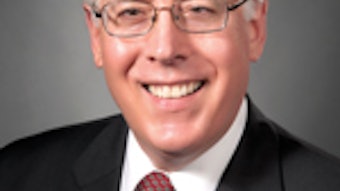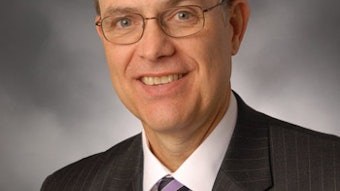Another Species in Peril: The Otolaryngosaurus
In the role of president of this prestigious organization, I am honored to take my turn at the tiller. This organization conveys both a degree of power and significant responsibility to its leaders. And this has been by my participation with other members in our Leadership Forum this past month. For those who were unable to attend, you will want to read more on the following pages by our EVP/CEO David R. Nielsen, MD. He addresses the intricacies and knotty issues that face our specialty this year, and outlines our strategic framework for addressing them. Developing our strategic plan is both stimulating in terms of possible initiatives and frustrating, knowing our limitations in available human and monetary resources. One thing, however, I feel compelled to say, the state of the American Academy of Otolaryngology—Head and Neck Surgery is strong. This past January, prior to the State of the Union address, I learned that the presidential speechwriter’s favorite word is “strong.” “Strong is a tempting word,” according to speechwriter, David Kusnet. “It’s simple, declarative.” It has the added benefit of being accurate and it applies to AAO-HNS/F. I can offer you a sampling of the AAO-HNS/F strengths and some examples of how you might have benefited. Strength in Our Knowledge Last month, one of the calls that staff took came from a Texas member who asked about licensing our patient information library. Our staff explained the depth of the library and how it is developed by clinical committees and updated to reflect guidelines and consensus statements. He was relieved and happy with the product as he sampled the content online. He felt it would address his hospital’s requirement to document patient consultation as part of his participation in the Meaningful Use initiatives. He was grateful that the Academy’s product could meet his needs in such a straightforward fashion. Strength in Our Vision As Dr. Nielsen conveys, the matrix of AAO-HNS products and services is impressive. Many are available as a benefit of membership, including analyses of CMS regulations and Medicare physician fee schedules each year. One upcoming struggle facing all practices is just six months away. The October 1st transition to ICD-10 will be a tremendous challenge. On that day, unlike the much-feared arrival of Y2K (the arrival of which proved anticlimactic), the way in which we do business with patients and payers really will change. Many organizations have worked, to put off this upcoming deadline, which was postponed once already. This is one of a number of practice mandates that seem to threaten us with a sense of “mass extinction,” at least financially. So, will you become a member of another species in peril, the Otolaryngosaurus? No. This Academy has been working continually to inform and prepare you, its members, for its inevitable arrival. During the 2009 Annual Meeting, I moderated a miniseminar offered by AAPC’s Rhonda Buckholtz, “ICD-9 Transition Hurdles to ICD-10 Diagnostic Coding.” And such courses have continued since. Last May, the Bulletin offered, “The Transition to ICD-10: Will You Be Ready?” by members, Robert R. Lorenz, MD, and Lee D. Eisenberg, MD. Dr Lorenz updated attendees at the recent BOG component of the Leadership Forum. Strength in the Quality of Patient Care Last year’s strategic focus was to provide members with the quality and cost measures and tools to meet the demands of stakeholders. To this end, AAO-HNSF has updated its web-based application (PQRS Wizard) for uploading measures to the CMS PQRS program with 2014 reporting changes as noted in the July Bulletin. CMS shows about 23 percent of otolaryngologists participating, which is similar to the overall reporting rate. Clinical Practice Guideline and Consensus Statement development continues with the Clinical Practice Guidelines: Acute Otitis Externa (update), which came out this February, and Tinnitus which is close to publication. Allergic Rhinitis and Adult Sinusitis (an update) are in development while a Clinical Consensus Statement on Chronic and Recurrent Pediatric Sinusitis is getting underway. AAOHNS/F strategic planning was just completed and we are integrating this into our next year’s planning and budget. The goal is to balance the needs of our members and specialty with available resources to keep neither you, the member, nor the Academy from becoming an endangered species.
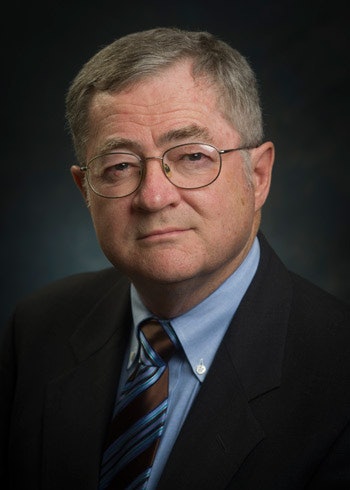 Richard W. Waguespack, MD AAO-HNS/F President
Richard W. Waguespack, MD AAO-HNS/F PresidentIn the role of president of this prestigious organization, I am honored to take my turn at the tiller.
This organization conveys both a degree of power and significant responsibility to its leaders. And this has been by my participation with other members in our Leadership Forum this past month.
For those who were unable to attend, you will want to read more on the following pages by our EVP/CEO David R. Nielsen, MD. He addresses the intricacies and knotty issues that face our specialty this year, and outlines our strategic framework for addressing them. Developing our strategic plan is both stimulating in terms of possible initiatives and frustrating, knowing our limitations in available human and monetary resources.
One thing, however, I feel compelled to say, the state of the American Academy of Otolaryngology—Head and Neck Surgery is strong.
This past January, prior to the State of the Union address, I learned that the presidential speechwriter’s favorite word is “strong.” “Strong is a tempting word,” according to speechwriter, David Kusnet. “It’s simple, declarative.” It has the added benefit of being accurate and it applies to AAO-HNS/F.
I can offer you a sampling of the AAO-HNS/F strengths and some examples of how you might have benefited.
Strength in Our Knowledge
Last month, one of the calls that staff took came from a Texas member who asked about licensing our patient information library. Our staff explained the depth of the library and how it is developed by clinical committees and updated to reflect guidelines and consensus statements. He was relieved and happy with the product as he sampled the content online. He felt it would address his hospital’s requirement to document patient consultation as part of his participation in the Meaningful Use initiatives.
He was grateful that the Academy’s product could meet his needs in such a straightforward fashion.
Strength in Our Vision
As Dr. Nielsen conveys, the matrix of AAO-HNS products and services is impressive. Many are available as a benefit of membership, including analyses of CMS regulations and Medicare physician fee schedules each year. One upcoming struggle facing all practices is just six months away.
The October 1st transition to ICD-10 will be a tremendous challenge. On that day, unlike the much-feared arrival of Y2K (the arrival of which proved anticlimactic), the way in which we do business with patients and payers really will change. Many organizations have worked, to put off this upcoming deadline, which was postponed once already. This is one of a number of practice mandates that seem to threaten us with a sense of “mass extinction,” at least financially. So, will you become a member of another species in peril, the Otolaryngosaurus?
No. This Academy has been working continually to inform and prepare you, its members, for its inevitable arrival. During the 2009 Annual Meeting, I moderated a miniseminar offered by AAPC’s Rhonda Buckholtz, “ICD-9 Transition Hurdles to ICD-10 Diagnostic Coding.” And such courses have continued since. Last May, the Bulletin offered, “The Transition to ICD-10: Will You Be Ready?” by members, Robert R. Lorenz, MD, and Lee D. Eisenberg, MD. Dr Lorenz updated attendees at the recent BOG component of the Leadership Forum.
Strength in the Quality of Patient Care
Last year’s strategic focus was to provide members with the quality and cost measures and tools to meet the demands of stakeholders. To this end, AAO-HNSF has updated its web-based application (PQRS Wizard) for uploading measures to the CMS PQRS program with 2014 reporting changes as noted in the July Bulletin. CMS shows about 23 percent of otolaryngologists participating, which is similar to the overall reporting rate.
Clinical Practice Guideline and Consensus Statement development continues with the Clinical Practice Guidelines: Acute Otitis Externa (update), which came out this February, and Tinnitus which is close to publication. Allergic Rhinitis and Adult Sinusitis (an update) are in development while a Clinical Consensus Statement on Chronic and Recurrent Pediatric Sinusitis is getting underway.
AAOHNS/F strategic planning was just completed and we are integrating this into our next year’s planning and budget. The goal is to balance the needs of our members and specialty with available resources to keep neither you, the member, nor the Academy from becoming an endangered species.
